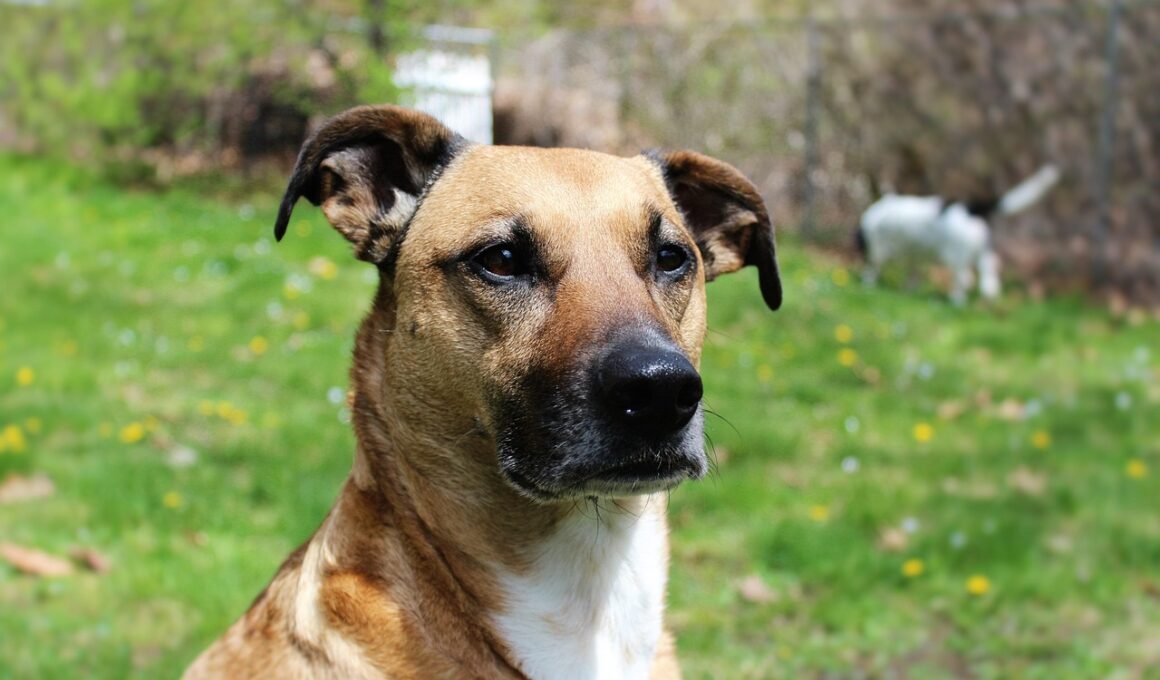Creating Compelling Infographics
Infographics serve as an excellent medium for sharing important information about dog rescue. They combine engaging visuals with data that can create a persuasive argument for supporting dog rescue initiatives. When creating infographics, it’s crucial to utilize captivating images, clear fonts, and a structured layout that can attract viewers on social media platforms. Start with a compelling headline that encapsulates the main message, making it easy for individuals to grasp the essence of the infographic quickly. Additionally, the color scheme should reflect the theme of dog rescue, incorporating calming hues to evoke compassion and urgency. Always ensure that your infographics include accurate statistics about dog rescues, such as the number of dogs adopted annually or the impact of rescue organizations in communities. This information will lend credibility to your message, making it more likely to be shared. Don’t forget to include your organization’s branding within the infographic to build recognition. By making your content shareable and visually appealing, you’ll increase the chances that it reaches a wider audience, raising awareness about the urgent need for dog rescue advocacy.
Properly citing your sources is vital when creating infographics, as it adds legitimacy to the claims you’re making about dog rescue. Clear attribution helps to build trust with your audience and encourages them to consider your message more seriously. Utilize reputable sources such as the ASPCA or local shelters to gather data. Beyond statistics, include powerful stories or testimonials from individuals involved in dog rescues. These narratives lend a personal touch and can make your visuals even more impactful. To maximize visibility, use social media optimization strategies. Create a shareable format, like a vertical infographic, ideal for platforms like Instagram and Pinterest. Tailor your content to suit the platform it will be shared on, ensuring to use hashtags relevant to dog rescue advocacy. Engage with users who share or comment on your infographic to create an interactive community around dog rescue efforts. Incorporating a call to action within your infographic can further drive engagement. Encouraging viewers to visit your website for more information or to donate will help to foster a sense of urgency, motivating individuals to participate in the cause actively.
Using Data Effectively
Displaying statistics in an infographic can transform complex data into easily digestible information that promotes dog rescue awareness. Utilize charts and graphs to illustrate key findings that can spark interest in your cause. Highlight numbers that showcase the significance of adopting rather than buying pets, as many individuals might not understand the extent of shelter overcrowding. For instance, include data that reveals the stark differences between the number of pets rescued and those abandoned every year. Visualizing this data can tug at the heartstrings, encouraging compassion for dogs in need. Infographics should also focus on the benefits of rescue dogs, such as their loyalty and ability to adapt to new homes. Including facts on the variety of breeds available in shelters can further counter the stereotype that rescue dogs are of lesser quality. For instance, mentioning popular breeds found in rescues can capture the attention of potential adopters who may have preconceived notions about adopting versus purchasing. Using arrows or icons alongside your data can help guide the viewer’s eye, ensuring that they absorb the information efficiently.
Sharing infographics across various social media platforms can significantly elevate awareness about dog rescues. Leverage popular social media channels like Facebook, Twitter, and Instagram to ensure your content reaches an expansive audience. Each platform has its unique audience demographics, and customizing your posts accordingly can enhance engagement. For instance, Instagram, with its focus on visual content, is perfect for showcasing infographics. Twitter, on the other hand, is suited for quick shareable quotes or statistics, where you can link back to your full infographic. Facebook allows for more detailed descriptions, providing an opportunity to share personal adoption stories alongside your infographic. Engage with your audience by encouraging them to share your content, use open-ended questions in your posts, and respond quickly to comments. When your audience feels involved, they’re more likely to become advocates for your cause. The key to advocating for dog rescues effectively through infographics lies in their visual appeal and the clarity of their information. The more compelling your infographic, the higher the likelihood it will be shared among users.
Designing for Impact
Design aspects play a significant role in the effectiveness of your infographic regarding dog rescues. Choose colors and fonts wisely. For instance, soft pastels can evoke a feeling of compassion, while bold colors may draw attention to crucial statistics. A consistent color scheme that reflects your organization’s branding creates a cohesive look across your visuals. Make sure to balance visuals and text; overcrowding your infographic with either can dilute your message. Effective spacing can make your infographic more readable and visually appealing. Icons can serve as excellent visual tools to highlight essential features and benefits of dog adoption, such as companionship, loyalty, and protection. It’s also vital to maintain a clear hierarchy in your design. Larger, bolder headings should introduce each segment, while supportive data can be slightly smaller, guiding the reader’s eye through the infographic organically. Always aim for clarity—viewers should be able to quickly understand the message without confusion. Infographics that tell a story are often the ones that resonate most with an audience, potentially prompting them to take action and support dog rescue efforts.
For success in creating shareable infographics, consider collaboration with graphic designers who specialize in infographics. Their expertise can enhance the aesthetic quality and ensure that statistical data is accurately represented. By investing in professional design, your infographics will stand out amid the countless materials shared daily on social media. It can also be beneficial to gather feedback from both peers and audience members, tweaking your infographic for improved clarity and engagement. Consider conducting A/B testing to determine which designs resonate most with your audience. You could create multiple versions of an infographic featuring different layouts or types of data representation, analyzing which one garners more shares and likes. Utilize the insights shared by your audience to refine future designs and content strategies. Establishing a regular posting schedule for infographics can maintain interest among followers and create anticipation for upcoming posts, thereby enhancing engagement. The combination of an effective posting strategy with well-designed and articulated infographics can create a powerful tool for advocating for dog rescue initiatives and helping contribute to a decline in abandoned dogs.
Emphasizing the Importance of Dog Rescue
It’s essential to clearly convey the importance of dog rescue in every infographic you create. Many people might not realize the sheer number of animals waiting for rescue, often in dire situations. Using statistics regarding euthanasia rates alongside images of happy, adopted dogs can create a powerful juxtaposition that elicits empathy. Showcasing success stories—before and after photos of rescued dogs—could highlight the transformational impact of rescue efforts. These stories are relatable and can resonate strongly with your audience. By emphasizing the notion that rescuing a dog is not only saving one life but also creating space and opportunity for another animal in need, you can foster a deeper connection to the cause. Highlight community involvement initiatives, such as local adoption events, to create a sense of belonging and motivate viewers to participate actively. Share the narrative not just of the dogs but also of the rescuers and adopters who have found joy and companionship. Using infographics as tools for storytelling promotes not only awareness but also creates advocates within your community, ultimately leading to more successful rescue endeavors.
To further enhance the reach of your infographics, consider engaging with local businesses and community groups as potential partners. Collaboration can help amplify your message and expand your audience. Seek local pet stores, veterinary clinics, or animal shelters willing to share your infographic on their platforms. They may also assist you in promoting local adoption events, improving community involvement. Forming partnerships can additionally lead to the creation of joint infographics that represent mutual concerns, such as the need for spaying, neutering, and adopting. By leveraging each partner’s audience, you collectively increase the visibility of dog rescue efforts. Encourage partners to tag your organization in their posts to create a robust engagement loop. You might even explore utilizing popular influencers within the pet community, significantly enhancing your outreach. Influencers can provide access to a highly engaged audience, educating their followers on the importance of your message and effectively encouraging action. Overall, the collaboration strengthens your advocacy while spreading the vital message of rescue and adoption, creating a better future for dogs.


